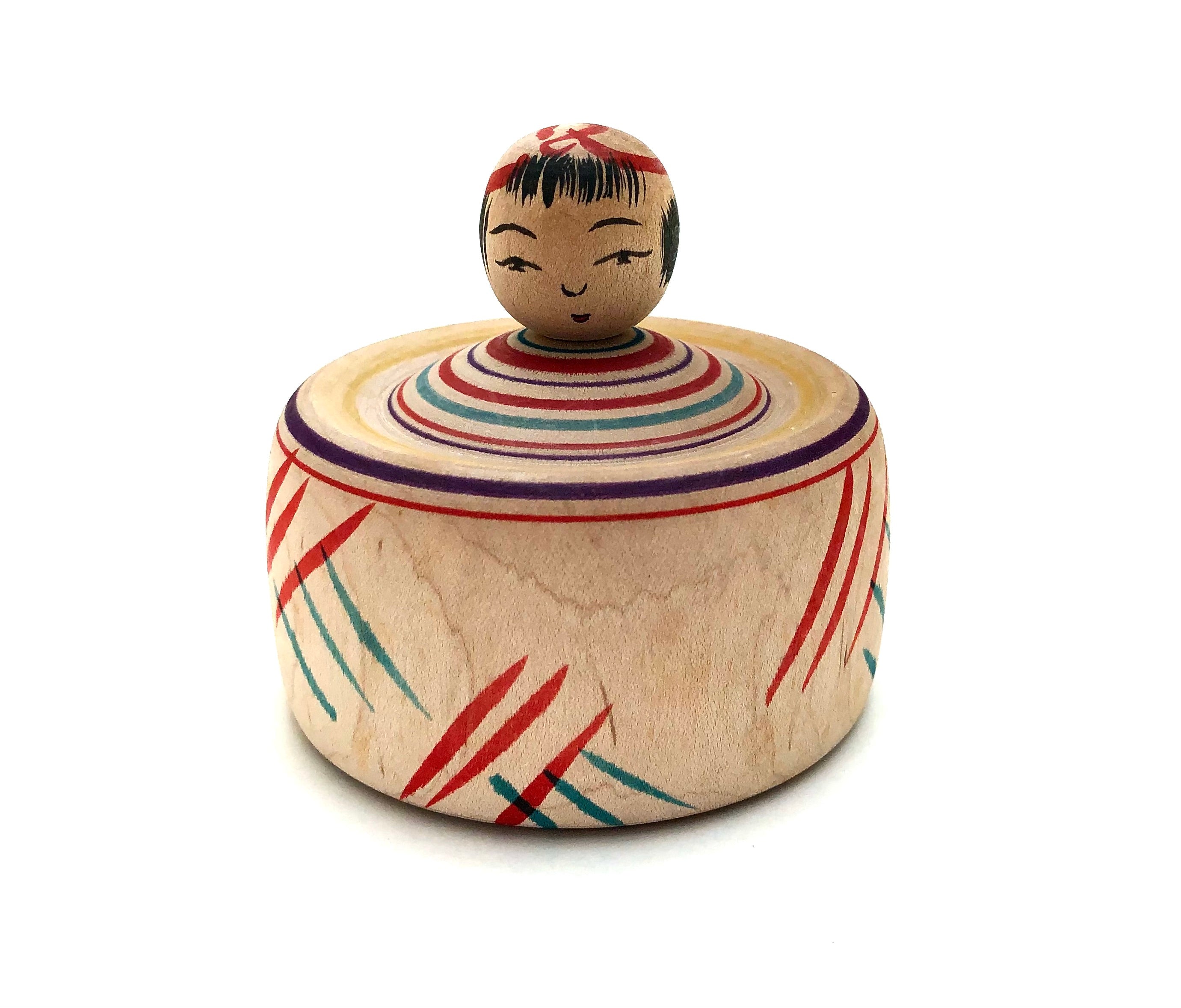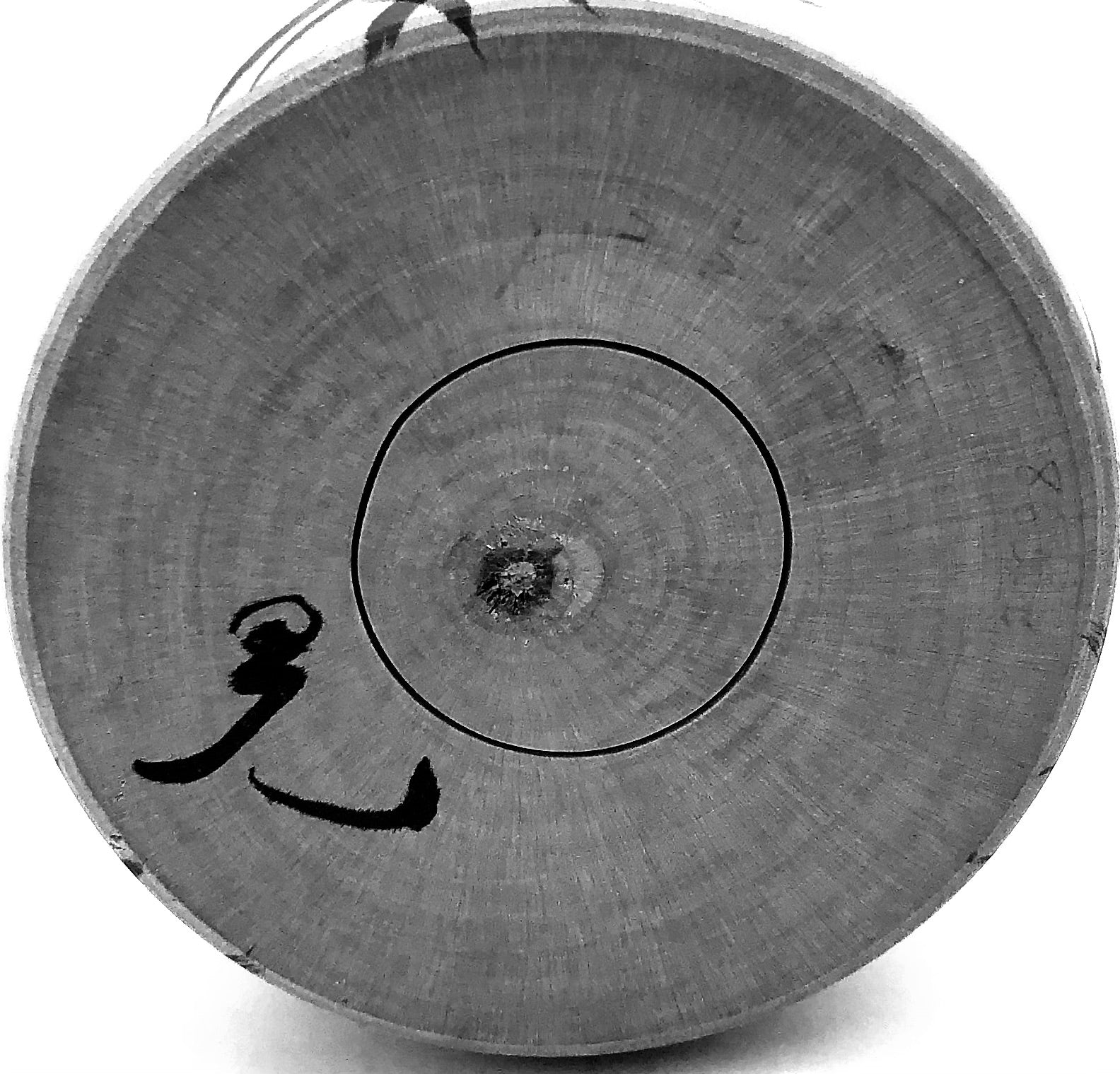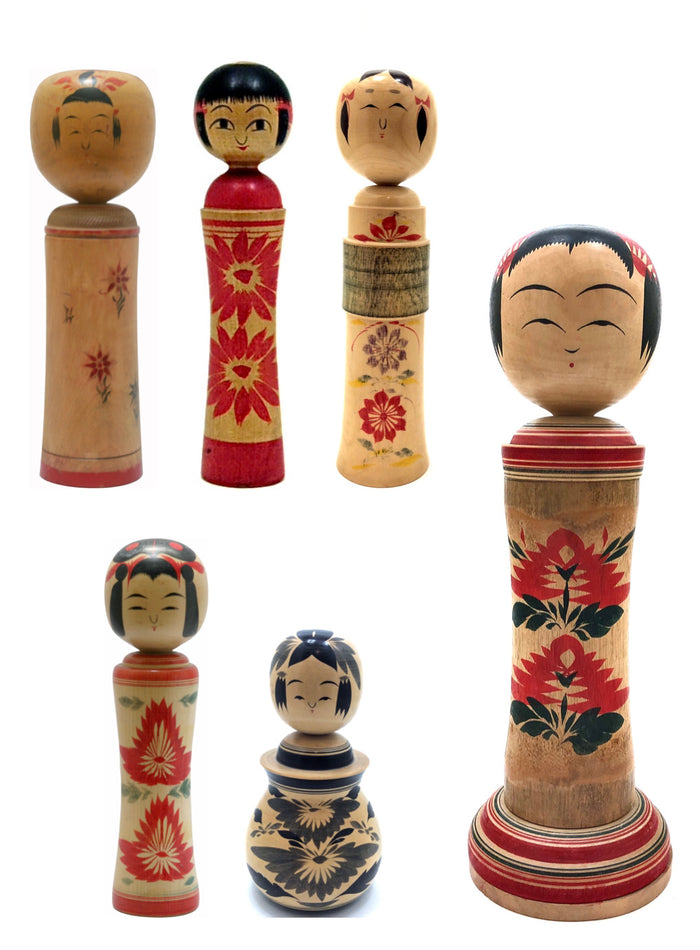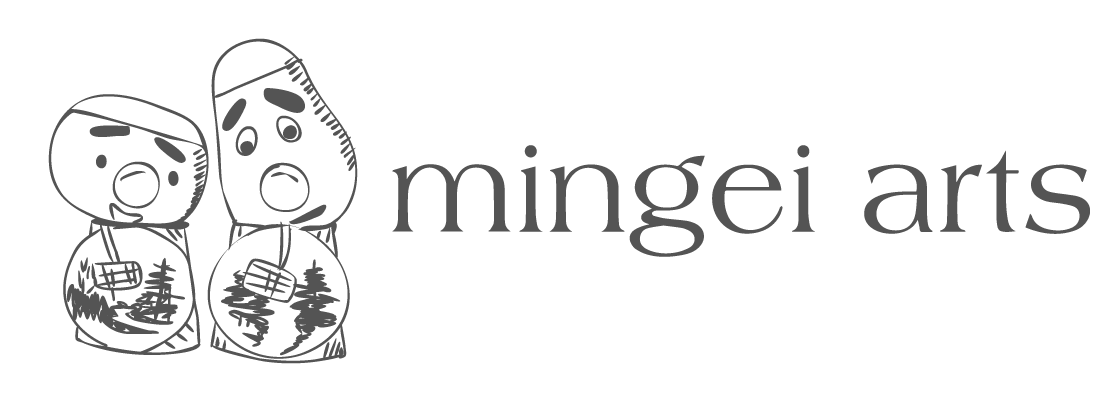

Vintage Traditional Narugo Ejiko Kokeshi by Akira Kon
Dimensions: 2-3/4”h x 2-7/8” dia.
Offered is an extremely rare Narugo Ejiko by master Akira Kon. It is a very simple representation of the Ejiko with a motif/stripings regularly seen at festivals. Additionally, it has the Rokoru Moya circular lifework around its collar. Bangs set wide apart are the definitive feature of the head with a red bow on the top and side hair fringes on each side of its face, along with the standard single eyelid, and a cat nose. Though these basically plain dolls are not as decorative as others of the Traditional school, they’re unique, flowing visual forms.
For further information see, Ejiko | Izume.Ko | Nemariko in our Japanese Vintage Toy section.
Condition: Very Good condition having excellent care and handling affording each doll age-old elegance. Retains the original craft/workmanship showing a wonderfully-developed patina commensurate with age and unrestored. Each piece meets all the standards of Traditional Kokeshi Ejiko collectibles and is an exceptional piece for the collectors of Narugo Family dolls.

Japanese Traditional Kokeshi
Narugo-Kei (Family)
Prefecture: Miyaka
Origin:
This strain of Kokeshi is the oldest family of Narugo from Miyagi Prefecture, founded by Onuma Matagoro in the late Edo period. Naruko Kokeshi is known for its unique body and head shape. These are the popular “squeaking or crying child” dolls and are made of two pieces, with the head being attached to the body via a snap-in projection, allowing it to be turned, thus making the squeak. Naru is "sound or cry," and ko is “child". Thus, Narugo is a "crying child”. It's no surprise, then, that the Naruko Kokeshi makes a crying sound when her head is turned. They originally came from Narugo Onsen in Miyagi Prefecture and originated sometime in the Edo period, when approximately 120 craftsmen were producing this style. The Naruko kokeshi has been labeled the most distinctive and sophisticated. That said, the kanji for Naruko is still commonly seen with the kojin’s signature.
Collector's note – characteristics / painting style:
Narugo dolls are defined by their cylindrical, thick, and straight-shaped bodies, narrowing slightly at the waist with a shoulder-beveled dome called a mori agari bubun. Its head is large and round with narrow (Hitofude), one-stroke eyelids, an iris (Hitoe mabuta), and a slightly arched eyebrow. The nose is known as a cat’s nose, which is small and slightly curved. Its mouth consists of two small curved red lines or a small single red lip. Bangs are set wide apart and are the definitive feature of the head, with bangs over the forehead, side hair fringes, and a red ‘tegara ’- style ribbon. They are also very balanced and typically have paintings of chrysanthemums (Kiku), iris (Ayame), or peonies (Botan), and are occasionally painted black. Though these plain dolls are not as decorative as others of the Traditional school, their unique, flowing forms are stronger visually because of their inherent elegance.
 Leading Craftsmen:
Leading Craftsmen:
Akiyama, Chuichi, 1913-1984 - No additional published information
Hayashaka, Takashi, 1925-2010 - No additional published information
Izu Sadao, 1905-1938, Naruto Liniage. Master: and Reitaro. The eldest son of farmer Izu Kurataro in Ginzan Shinhata, Obanazawa City, Yamagata Prefecture. The owner of Fujiya Inn and the head of the ward, Yamagata Prefecture Woodworking Workshops, were held at the Hayashihachi Inn, where Izu-san learned the techniques of woodturning. After acquiring the techniques, Izu Sadao continued his woodturning work at Ginzan, specializing in making Kokeshi dolls and toys. Takei Takeo sent an order for Kokeshi and toya to Izu Sadao, and the works he acquired in December 1928 were introduced in the "Japanese Folk Toys, Eastern Section." Around 1933 and 1934, Izu installed three foot pedal lathes in his own home, invited Omiya Yasujiro and Endo Kozo as craftsmen, and his father, Izu Kurataro, made a large number of toys and Kokeshi dolls by cutting wood boards. No additional published information
Kakizawa, Koretaka, 1940, (Narugo, Miyagi) - Master:Takahashi, Morio. No additional published information
Kishi, Mason, 1931-2010 - No additional published information
Matsuda, Mitsuo, 1929-2010 - No additional published information
Omiya, Masataka, 1939-1990 - No additional published information
Onuma, Matagoro,1924 - Grand Master Izu Mamoru, 1925, (Master: Izu, Sadao (Obanazawa, Yamagata). No additional published information
Onuma, Kengo, 1937 - (Master :Onuma, Kenzaburo). No additional published information
Samurai, Shoji, 1927-2011 - No additional published information
Sato, Yoshihiro, 1936-2015 - No additional published information
Sugi, Kunio, 1942 - (Master: Takakashi, Takeo). No additional published information
Takahashi Morio, 1917 Master- (Apprenticed under Master: Takahashi, Sakari). No additional published information
Takahashi, Matsuko, 1920-2005 - No additional published information
Takahashi, Takeo, 1916-2005 - (Master: Takashi Takezo). No additional published information
Explore & Learn More about Narugo-Kei (Family)